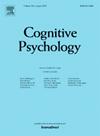自然计数和测量:语言和参考线索在确定哪个数量是“更多”中的作用
IF 3
2区 心理学
Q1 PSYCHOLOGY
引用次数: 0
摘要
当我们决定“哪个更多?”“对于一组物理对象或物质,我们沿着数量或大小等定量维度对它们进行比较。然而,这些比较的性质有时是不清楚的,因为维度的选择可能是不确定的。为了明确这种选择,人们可以依靠语言和参考指标。找到正确维度的一种线索是分类器或“量化器”,比如“盎司”,它与“更多”一起出现,比如“哪一个的盎司数更多?”本文中的研究着眼于这些基于量化器的比较,这是第一次在实验环境中,以及它们在多大程度上依赖于比较的参考。参与者回答了这些简单物体的图片问题,这些简单物体的大小和数量各不相同。正如预期的那样,他们回答的响应时间显示了量化器在将注意力引向数字或测量方面的强大效果。然而,量化器并不总是完全决定这种选择。首先,一些量词(例如,“more in boxful /spoonful”)在强调容器(盒子或勺子)的数量和强调容器内容的度量之间是模棱两可的。其次,即使是明确的量词(例如,“更多的立方体”)的阅读也会受到比较的指涉物(例如,“更多的盐在立方体中”)的影响。这些结果表明,人们可能从一开始就有一种广义的“更多”的感觉,他们在对量化者和指称者的反应中缩小了这种感觉。我们提供了一个数学模型来解释这种解释是如何发生的。本文章由计算机程序翻译,如有差异,请以英文原文为准。
Natural counting and measuring: The role of linguistic and referential cues in determining which quantity is “More”
When we decide “Which is more?” for groups of physical objects or substances, we compare the groups along a quantitative dimension like numerosity or size. The nature of these comparisons is sometimes unclear, however, because the choice of dimension may be uncertain. To clarify this choice, people can rely on linguistic and referential indicators. One type of clue to the right dimension is a classifier or “quantizer” like “ounces” that appears with “more,” as in “Which has more in ounces?” The studies in this paper look at these quantizer-based comparisons, for the first time in an experimental context, and the extent to which they depend on the comparisons’ referents. Participants answered questions like these for pictures of simple objects that differed independently in their size and number. As expected, response times for their answers show robust effects of the quantizers in directing attention to number or measure. However, the quantizers did not always fully dictate this choice. First, some quantizers (e.g., “more in boxfuls/spoonfuls”) are ambiguous between a reading that emphasizes the number of containers (boxes or spoons) and a reading that emphasizes the measure of their contents. Second, the reading of even unambiguous quantifiers (e.g., “more in cubes”) can be swayed by the referents of the comparison (e.g., “more salt in cubes”). These results suggest that people may begin with a generalized sense of “more” that they narrow in response to the quantizer and the referent, considered in tandem. We offer a mathematical model of how this interpretation takes place.
求助全文
通过发布文献求助,成功后即可免费获取论文全文。
去求助
来源期刊

Cognitive Psychology
医学-心理学
CiteScore
5.40
自引率
3.80%
发文量
29
审稿时长
50 days
期刊介绍:
Cognitive Psychology is concerned with advances in the study of attention, memory, language processing, perception, problem solving, and thinking. Cognitive Psychology specializes in extensive articles that have a major impact on cognitive theory and provide new theoretical advances.
Research Areas include:
• Artificial intelligence
• Developmental psychology
• Linguistics
• Neurophysiology
• Social psychology.
 求助内容:
求助内容: 应助结果提醒方式:
应助结果提醒方式:


